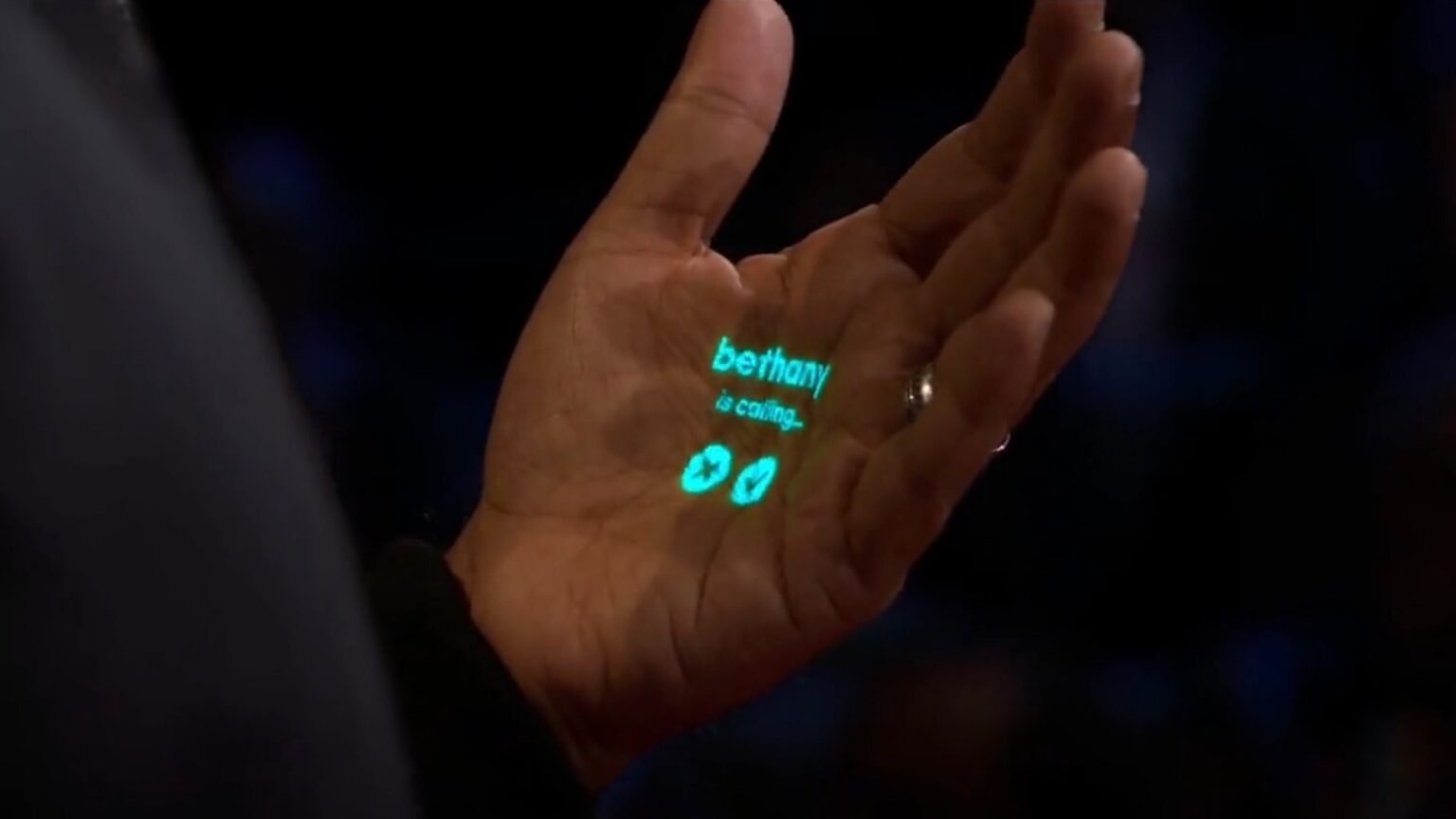[ad_1]

The world just got its first glimpse of an AI-powered “iPhone killer” device being developed by Humane, a startup founded by Apple veterans.
The demo raised eyebrows because the as-yet-unnamed wearable doesn’t have a screen — instead, it projects information onto objects around the user, including the palm of their hand.
Startup full of ex-Apple talent wants to kill the iPhone
We’ve all become accustomed to seeing people walk around everywhere looking at their iPhones — we do it ourselves. Humane thinks this is completely the wrong way to go. It wants devices to be as invisible as possible. In a cryptic teaser video released last summer, the company hinted at a laser-projection device that could one day replace the iPhone.
One of the founders of the company, Imran Chaudhri, said as much.
“The rumours are true… the smartphone is dead,” he said in a tweet last fall, promising to deliver “the world’s first device built from the ground up for AI.”
the rumours are true… the smartphone is dead
and coming next year from @Humane, the world’s first device built from the ground up for AI
— Imran Chaudhri (@imranchaudhri) October 18, 2022
First Humane demo shows off supposed iPhone killer
The early version of Humane’s device rides in the user’s pocket, where it sits ready to talk to the user. Or to other people: the demo shows the device translating comments into French spoken in Chaudhri’s own voice.
The @Humane wearable doing English->French AI translation in your own voice… wow. (SOUND ON)
Video credit @ZarifAli9
Read the exclusive on the Humane wearable’s features: pic.twitter.com/cmAWEU8DFS
— Ray Wong (@raywongy) April 21, 2023
With no screen, the wearable instead depends on a projector for visual information. During the demonstration, Chaudhri received a phone call. He then held up his hand so he could see info projected onto his palm that indicated his spouse and company co-founder, Bethany Bongiorno, was trying to reach him.
I obtained a video of @Humane ‘s AI-powered wearable projector in action (clipped from a video @zarifali9 sent me of the #TED2023 by @imranchaudhri)
This looks insaneee! pic.twitter.com/DDOfTMCxH5
— Ray Wong (@raywongy) April 21, 2023
AI that goes with you everywhere
Beyond the nifty tricks, Humane’s concept is for an artificial intelligence that learns about its user so it can be their personal assistant, according to Inverse.
It will, for example, look over the user’s calendar and give them a synopsis of the most important events of the day, not just read a list of names, times and locations. Chaudhri also mentioned showing a candy bar to the AI to get its opinion on whether the sweet would trigger his food allergies.
The device raises obvious privacy concerns. Many potential buyers will balk if too much information gathered by the AI is accessible by Humane.
What do you think?
Opinions of Humane’s screenless AI wearable are all over the map. Some online comments are positive, but others a quite skeptical.
Ray Wong, who wrote the Inverse article about the prototype, said, “This looks insaneee!” Parker Ortolani, known for creating Apple concept devices, said, “I want the humane gizmo much more than I want a headset.”
On the other hand, there are plenty of comments on Twitter that can be summed up with, “Why?” As one user said, “Struggling to understand the actual point of this? Looks cool though.”
The prototype demoed by Chaudhri leaves questions unanswered. Does this device require a front shirt pocket? Will users wear it around their neck instead? What’s the cost?
Humane is heavy on Apple vets
The creators of this device have many years experience in critical design roles at Apple. Humane was founded by Chaudhri and Bongiorno, a pair of Apple veterans who both left the company in 2016. Humane employs about 140 people, including 60 who formerly worked for Apple.
Chaudhri was one of the main inventors of the iPhone. A 20-year Apple veteran, he worked on the Macintosh, iPod, iPad, Apple Watch and iPhone. But he’s best known for inventing the iPhone’s user interface and interactions. He’s named as an inventor on thousands of patents.
“His work defines how the world interacts with technology, and is driven by his insistence on putting the human experience front and center in the design process,” his biography page on the Humane website says.
While at Apple, Chaudhri met Bongiorno, who led product teams. She became a director of software engineering for iOS and macOS projects. She played a leadership role in development of the original iPad prototype, going back as far as 2002.
David Snow contributed to this article.
[ad_2]
Source link
